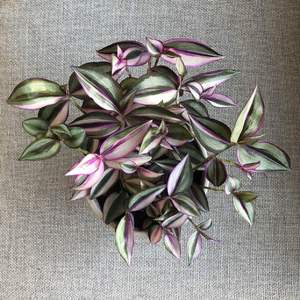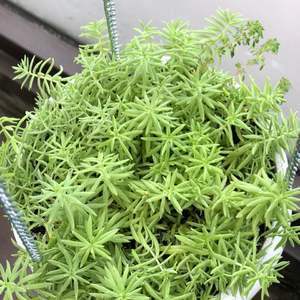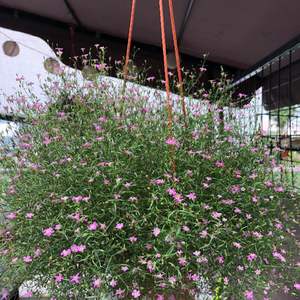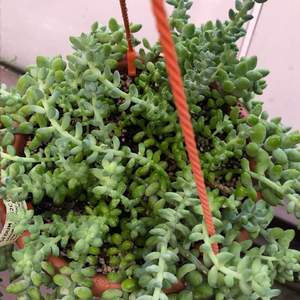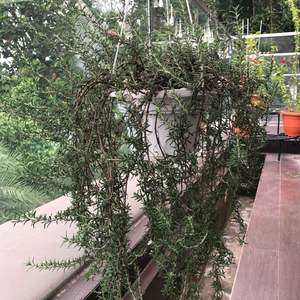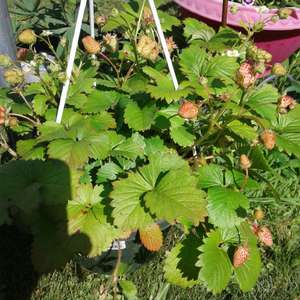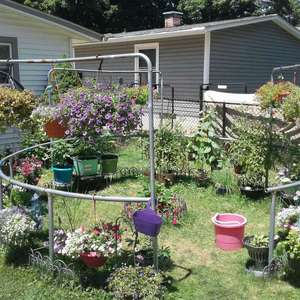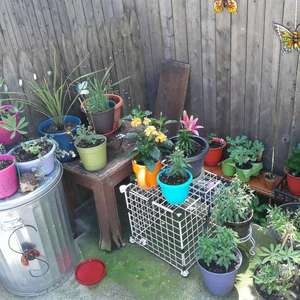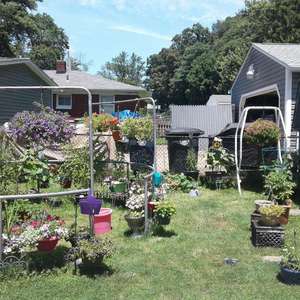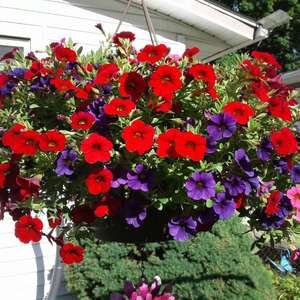文章
Miss Chen
2021年12月01日

The show-stopping hanging bugle-shaped flowers of brugmansia make this plant a delight for any garden. Grown either as a woody shrub or small tree, brugmansia is a tropical plant native to Central and South America. Brugmansia is best planted in mid-spring when temperatures outdoors no longer drop below 50 degrees at night. The plant will grow very quickly, often growing between 24 to 36 inches a year. All parts of the brugmansia plant are toxic to humans, dogs, and cats.1 It is also an invasive plant in Australia, New Zealand, Central America, the Caribbean, and the Pacific Islands.
Common Name Brugmansia, trumpet of death
Botanical Name Brugmansia
Family Solanaceae
Plant Type Perennial, shrub
Mature Size 6–20 ft. tall, 3–15 ft. wide
Sun Exposure Full
Soil Type Moist but well-drained
Soil pH Acidic
Bloom Time Summer, fall
Flower Color White, yellow, orange, pink, peach
Hardiness Zones 8–10 (USDA)
Native Area South America, Central America
Toxicity Toxic to people, toxic to pets

Brugmansia Care
Brugmansia can take the form of a shrub or small tree, depending on the area in which it's grown. Its leaves are 6 to 8 inches long, arranged alternately on the stems, and it's known for its spectacular drooping flowers, which can grow up to 20 inches long.
In cooler zones, brugmansia can be grown as a container plant and brought indoors when temperatures drop. The flowers produce a strong, fragrant scent, most noticeable at night. Hummingbirds are also drawn to its flowers and fragrance.
Light
Generally, brugmansia does well in a spot that boasts full sun. However, in especially hot or dry environments, it can stand to have a bit of shade, especially during the warmer afternoon hours. Regardless of the location, though, you should aim to allow the plant between six and eight hours of sunlight daily for it to thrive.
Soil
Brugmansia is perhaps least picky about the soil it grows in. It can exist happily in almost any blend, from sand and clay to loam and richly organic mixtures. The most important factor lies in the soil's drainage. Brugmansia does not like to be waterlogged but prefers consistently moist soil, so there's a delicate balance. If growing in pots, brugmansia will typically do well in a potting mix designed for azaleas and camellias.
Water
This is a very thirsty plant that needs to be watered well—and often. If growing brugmansia in a pot, ensure there are ample drainage holes at the base so the plant doesn't get waterlogged. Root rot can occur if the soil becomes soggy. The exact watering cadence for your plant will depend on the weather and the method of planting (container vs. in ground). Brugmansia needs more water when the weather is warm. Plants housed in a container may need to be watered twice a day during the peak of summer. Ultimately, never let the soil dry out, and you should aim to grant your plant at least three inches of water a week.
Temperature and Humidity
Generally, brugmansia can withstand moderate to warm temperatures and should not be kept outdoors if the temperatures dip below 40 degrees Fahrenheit. If you live in an environment where fall or winter gets cold, plant your brugmansia in a container that you can move to a dark, frost-free place (like a garage) before the first frost of the season. You can allow it to go dormant.
Fertilizer
Like many other plants with large, spectacular blooms, brugmansia should be fertilized at least once a week (larger plants can even be fertilized two to three times a week). Use a water-soluble fertilizer, and avoid slow-release formulas, as these do not work fast enough for the plant. Bloom-boosting fertilizers, such as 15-30-15 or 10-50-10 mixture, are best.
Types of Brugmansia
Brugmansia species have distinctive, drooping flowers, and most have sweetly scented blooms at night. The biggest difference between species is color.
Brugmansia suaveolens: Native to Brazil; this cream-colored blooming plant is one of the most popular species.
Brugmansia aurea: This plant sports yellow blooms and is often called a golden trumpet. It's native to Ecuador and Venezuela.
Brugmansia sanguine: This red-flowering species lacks a scent and is commonly pollinated by long-billed hummingbirds. It is native to Colombia and Chile.
Brugmansia vulcanicola: Native to the Andean Mountains range from Colombia to Ecuador, this salmon-colored specimen is considered the rarest of the brugmansia. Its 'Rosa Lila' hybrid is a rose-colored cultivar.
Brugmansia arborea: This plant features the shortest trumpet flowers, often a whiter cream color than most. This plant is native to the countries along the Andes Mountains range.
Pruning
Although they do not require pruning, trimming brugmansia will keep the plant producing flowers constantly. If growing it as a small tree, begin to prune when the main trunk forms its first "Y" and choose a central leader as the trunk. Systematically prune away older branches and stems to encourage the plant to produce more branches. Flowers will eventually appear on the terminal ends of the stems. The best time to prune brugmansia is typically in the fall. Keep at least six to 10 nodes on the branches.
If your shrub is getting too tall, you can easily train a container-grown brugmansia tree into a smaller shrub size. Pruning your container brugmansia to a desired height or shape will not affect the size or frequency of the flowers.
Propagating Brugmansia
Brugmansia can be propagated through seeds and cuttings. The best time to get a stem cutting is in the morning. Attempt propagation in the spring for the best success. Stem cuttings are the best method because the plant matures quicker than from seed. Here's how to propagate from stem cutting:
You will need potting soil, a pot, gloves, pruning shears, and optionally, rooting hormone.
Don the gloves and cut a stem, measuring back 10 inches from the tip of the selected cutting. Make a cut 1/4-inch below a set of leaves using the pruning shears. Strip off the bottom set of leaves just above the cut to expose the leaf nodes.
Apply rooting hormone to the cut end and bury the cut end in moistened potting soil. Firmly pack the soil around the stem to hold it up.
Put the pot in a slightly shady spot, and cover the pot with plastic. Water the plant from the bottom by placing the pot with its bottom-set drainage holes in a tray of water.
After a few weeks, the cutting will develop a good root system and be transplanted into the garden or a larger pot.
How to Grow Brugmansia From Seed
Moisten a quality potting mix in a pot and lay the seed on the soil surface. Cover with about a quarter to one-half inch of soil. Keep the soil moist. Place the pot in a warm place and look for signs of germination. Germination can take from two weeks to several months, but most seedlings will emerge within a month.
Potting and Repotting Brugmansia
Brugmansias can grow well in containers and are the way to go if you plan to keep it outdoors in a non-tropical zone. You will need to bring it if the temperatures drop lower than 50 F. Plant brugmansia in a 24-inch diameter container. Keep your potted brugmansia thoroughly watered while outside. Potted plants need more water than in-ground plants. Expect to water your outdoor brugmansia at least twice a day at the height of the season's hot, sunny days. Most brugmansias will not grow to their full height if they are grown in a container. At the most, the typical container-grown brugmansia will reach about 12 feet. Keep the plant pruned to maintain that size. Potted brugmansia should be gradually repotted as it grows to its final container—about 20 gallons in size.
Overwintering
Once winter sets in and outdoor temps drop below 50 F, bring in your brugmansia. You can treat it as a houseplant or allow it to go into dormancy. As a houseplant, give it light and water. Water it when the soil dries out, like any other houseplant. It may not flower while inside, but the foliage will look nice.
If you decide to allow it to go dormant, place it in a dark garage, basement, or closet (not colder than 50 F). You can trim it back by one-third and not harm the plant. Only water it sparingly about once a month. It may lose its leaves and look dead, but as long as the trunk is green, it's still alive. As spring approaches, about a month before you can reintroduce the plant to the outdoors, gradually increase watering (about once a week). Put the plant in a sunny spot or give it a grow light for at least 8 hours. In about one week, you should notice some new leaves or branch growth. After you put the plant back outside, its growth will boom, and you will notice its signature flowers within weeks.
Common Pests
Whiteflies are a big problem for brugmansia.3 Cabbage worms, spider mites, and aphids are also common. Other pests that may appear include cucumber beetles (in the midwestern United States), slugs and snails, fungus gnats (inside), and mealybugs. To treat these pest infestations, use isopropyl (rubbing) alcohol on a cotton ball or cotton swab to dab the insects. Another option, make a spray solution of equal parts water and isopropyl alcohol and spray the plant. You can also treat the plant with neem oil or insecticidal soap to repel pests.
How to Get Brugmansia to Bloom
Only a mature brugmansia will bloom. If you started your plant from seeds, it could take up to five years before you see blooms. If you started your brugmansia from a cutting, it might speed up the process, but it can still take about four years. Brugmansia needs ample water to produce blooms and good drainage for good root health. Brugmansia is also a heavy feeder, requiring fertilizer regularly. If all of these factors are met, make sure that it's not root-bound. If it's in too small a container, it may not produce flowers. Move it to a larger container, water, and feed it.

Common Problems With Brugmansia
This plant requires little care and eventually yields some of the most noteworthy blossoms, however, brugmansia is susceptible to pests and diseases that can compromise the health and longevity of the plant.
Stunted Plant Growth and Blotches
Mosaic virus and tomato spotted wilt are common viruses that affect plants in the Solanaceae family. They both can cause stunted plant growth and irregular streaking or blotches. Though the plant may survive and bounce back with proper care, these viruses are permanent and cannot be cured. Avoid planting angel trumpets next to heirloom tomatoes or tobacco plants (Nicotiana spp.) to prevent these viruses.
Wilting Leaves
Fusarium and verticillium wilt are two fungal infections. Both fungi affect the roots and travel up the stem, stopping water from entering the plant and causes wilted foliage. Fusarium wilt usually occurs in warm weather, while verticillium is more common in cooler temperatures. There is no cure; you can only manage the disease. The fungi can live in the soil for a long time. The best bet is to start with new plants and new soil.
Blackening Leaves and Smelly Odor
Root rot is a common fungal disease caused by excessive watering. You can prevent root rot by keeping the potting mix moist but never soggy. Decrease watering when temperatures drop in late summer or autumn. Root rot can be deadly, but if caught early enough, you might be able to save the plant. Pull the root ball out of the container; cut away rotten, mushy roots; sterilize the potting container; and plant the healthy portion of root in fresh, well-draining soil.
Common Name Brugmansia, trumpet of death
Botanical Name Brugmansia
Family Solanaceae
Plant Type Perennial, shrub
Mature Size 6–20 ft. tall, 3–15 ft. wide
Sun Exposure Full
Soil Type Moist but well-drained
Soil pH Acidic
Bloom Time Summer, fall
Flower Color White, yellow, orange, pink, peach
Hardiness Zones 8–10 (USDA)
Native Area South America, Central America
Toxicity Toxic to people, toxic to pets

Brugmansia Care
Brugmansia can take the form of a shrub or small tree, depending on the area in which it's grown. Its leaves are 6 to 8 inches long, arranged alternately on the stems, and it's known for its spectacular drooping flowers, which can grow up to 20 inches long.
In cooler zones, brugmansia can be grown as a container plant and brought indoors when temperatures drop. The flowers produce a strong, fragrant scent, most noticeable at night. Hummingbirds are also drawn to its flowers and fragrance.
Light
Generally, brugmansia does well in a spot that boasts full sun. However, in especially hot or dry environments, it can stand to have a bit of shade, especially during the warmer afternoon hours. Regardless of the location, though, you should aim to allow the plant between six and eight hours of sunlight daily for it to thrive.
Soil
Brugmansia is perhaps least picky about the soil it grows in. It can exist happily in almost any blend, from sand and clay to loam and richly organic mixtures. The most important factor lies in the soil's drainage. Brugmansia does not like to be waterlogged but prefers consistently moist soil, so there's a delicate balance. If growing in pots, brugmansia will typically do well in a potting mix designed for azaleas and camellias.
Water
This is a very thirsty plant that needs to be watered well—and often. If growing brugmansia in a pot, ensure there are ample drainage holes at the base so the plant doesn't get waterlogged. Root rot can occur if the soil becomes soggy. The exact watering cadence for your plant will depend on the weather and the method of planting (container vs. in ground). Brugmansia needs more water when the weather is warm. Plants housed in a container may need to be watered twice a day during the peak of summer. Ultimately, never let the soil dry out, and you should aim to grant your plant at least three inches of water a week.
Temperature and Humidity
Generally, brugmansia can withstand moderate to warm temperatures and should not be kept outdoors if the temperatures dip below 40 degrees Fahrenheit. If you live in an environment where fall or winter gets cold, plant your brugmansia in a container that you can move to a dark, frost-free place (like a garage) before the first frost of the season. You can allow it to go dormant.
Fertilizer
Like many other plants with large, spectacular blooms, brugmansia should be fertilized at least once a week (larger plants can even be fertilized two to three times a week). Use a water-soluble fertilizer, and avoid slow-release formulas, as these do not work fast enough for the plant. Bloom-boosting fertilizers, such as 15-30-15 or 10-50-10 mixture, are best.
Types of Brugmansia
Brugmansia species have distinctive, drooping flowers, and most have sweetly scented blooms at night. The biggest difference between species is color.
Brugmansia suaveolens: Native to Brazil; this cream-colored blooming plant is one of the most popular species.
Brugmansia aurea: This plant sports yellow blooms and is often called a golden trumpet. It's native to Ecuador and Venezuela.
Brugmansia sanguine: This red-flowering species lacks a scent and is commonly pollinated by long-billed hummingbirds. It is native to Colombia and Chile.
Brugmansia vulcanicola: Native to the Andean Mountains range from Colombia to Ecuador, this salmon-colored specimen is considered the rarest of the brugmansia. Its 'Rosa Lila' hybrid is a rose-colored cultivar.
Brugmansia arborea: This plant features the shortest trumpet flowers, often a whiter cream color than most. This plant is native to the countries along the Andes Mountains range.
Pruning
Although they do not require pruning, trimming brugmansia will keep the plant producing flowers constantly. If growing it as a small tree, begin to prune when the main trunk forms its first "Y" and choose a central leader as the trunk. Systematically prune away older branches and stems to encourage the plant to produce more branches. Flowers will eventually appear on the terminal ends of the stems. The best time to prune brugmansia is typically in the fall. Keep at least six to 10 nodes on the branches.
If your shrub is getting too tall, you can easily train a container-grown brugmansia tree into a smaller shrub size. Pruning your container brugmansia to a desired height or shape will not affect the size or frequency of the flowers.
Propagating Brugmansia
Brugmansia can be propagated through seeds and cuttings. The best time to get a stem cutting is in the morning. Attempt propagation in the spring for the best success. Stem cuttings are the best method because the plant matures quicker than from seed. Here's how to propagate from stem cutting:
You will need potting soil, a pot, gloves, pruning shears, and optionally, rooting hormone.
Don the gloves and cut a stem, measuring back 10 inches from the tip of the selected cutting. Make a cut 1/4-inch below a set of leaves using the pruning shears. Strip off the bottom set of leaves just above the cut to expose the leaf nodes.
Apply rooting hormone to the cut end and bury the cut end in moistened potting soil. Firmly pack the soil around the stem to hold it up.
Put the pot in a slightly shady spot, and cover the pot with plastic. Water the plant from the bottom by placing the pot with its bottom-set drainage holes in a tray of water.
After a few weeks, the cutting will develop a good root system and be transplanted into the garden or a larger pot.
How to Grow Brugmansia From Seed
Moisten a quality potting mix in a pot and lay the seed on the soil surface. Cover with about a quarter to one-half inch of soil. Keep the soil moist. Place the pot in a warm place and look for signs of germination. Germination can take from two weeks to several months, but most seedlings will emerge within a month.
Potting and Repotting Brugmansia
Brugmansias can grow well in containers and are the way to go if you plan to keep it outdoors in a non-tropical zone. You will need to bring it if the temperatures drop lower than 50 F. Plant brugmansia in a 24-inch diameter container. Keep your potted brugmansia thoroughly watered while outside. Potted plants need more water than in-ground plants. Expect to water your outdoor brugmansia at least twice a day at the height of the season's hot, sunny days. Most brugmansias will not grow to their full height if they are grown in a container. At the most, the typical container-grown brugmansia will reach about 12 feet. Keep the plant pruned to maintain that size. Potted brugmansia should be gradually repotted as it grows to its final container—about 20 gallons in size.
Overwintering
Once winter sets in and outdoor temps drop below 50 F, bring in your brugmansia. You can treat it as a houseplant or allow it to go into dormancy. As a houseplant, give it light and water. Water it when the soil dries out, like any other houseplant. It may not flower while inside, but the foliage will look nice.
If you decide to allow it to go dormant, place it in a dark garage, basement, or closet (not colder than 50 F). You can trim it back by one-third and not harm the plant. Only water it sparingly about once a month. It may lose its leaves and look dead, but as long as the trunk is green, it's still alive. As spring approaches, about a month before you can reintroduce the plant to the outdoors, gradually increase watering (about once a week). Put the plant in a sunny spot or give it a grow light for at least 8 hours. In about one week, you should notice some new leaves or branch growth. After you put the plant back outside, its growth will boom, and you will notice its signature flowers within weeks.
Common Pests
Whiteflies are a big problem for brugmansia.3 Cabbage worms, spider mites, and aphids are also common. Other pests that may appear include cucumber beetles (in the midwestern United States), slugs and snails, fungus gnats (inside), and mealybugs. To treat these pest infestations, use isopropyl (rubbing) alcohol on a cotton ball or cotton swab to dab the insects. Another option, make a spray solution of equal parts water and isopropyl alcohol and spray the plant. You can also treat the plant with neem oil or insecticidal soap to repel pests.
How to Get Brugmansia to Bloom
Only a mature brugmansia will bloom. If you started your plant from seeds, it could take up to five years before you see blooms. If you started your brugmansia from a cutting, it might speed up the process, but it can still take about four years. Brugmansia needs ample water to produce blooms and good drainage for good root health. Brugmansia is also a heavy feeder, requiring fertilizer regularly. If all of these factors are met, make sure that it's not root-bound. If it's in too small a container, it may not produce flowers. Move it to a larger container, water, and feed it.

Common Problems With Brugmansia
This plant requires little care and eventually yields some of the most noteworthy blossoms, however, brugmansia is susceptible to pests and diseases that can compromise the health and longevity of the plant.
Stunted Plant Growth and Blotches
Mosaic virus and tomato spotted wilt are common viruses that affect plants in the Solanaceae family. They both can cause stunted plant growth and irregular streaking or blotches. Though the plant may survive and bounce back with proper care, these viruses are permanent and cannot be cured. Avoid planting angel trumpets next to heirloom tomatoes or tobacco plants (Nicotiana spp.) to prevent these viruses.
Wilting Leaves
Fusarium and verticillium wilt are two fungal infections. Both fungi affect the roots and travel up the stem, stopping water from entering the plant and causes wilted foliage. Fusarium wilt usually occurs in warm weather, while verticillium is more common in cooler temperatures. There is no cure; you can only manage the disease. The fungi can live in the soil for a long time. The best bet is to start with new plants and new soil.
Blackening Leaves and Smelly Odor
Root rot is a common fungal disease caused by excessive watering. You can prevent root rot by keeping the potting mix moist but never soggy. Decrease watering when temperatures drop in late summer or autumn. Root rot can be deadly, but if caught early enough, you might be able to save the plant. Pull the root ball out of the container; cut away rotten, mushy roots; sterilize the potting container; and plant the healthy portion of root in fresh, well-draining soil.
0
0
文章
Miss Chen
2021年08月15日

The arrowhead vine is a pretty trailing or climbing vine that tends to grow quickly under the right conditions. Native to a wide region of South America, it has become a popular houseplant, thanks to its easy-going nature and appealing hanging shape.
The arrowhead vine's leaf structure changes as it matures, going from a simple arrow shape to a deeply lobed or divided mature leaf. Its leaves can vary in hue depending on their age, ranging from dark green and white to lime green and bright pink. Arrowhead vine is only viable outdoors in USDA hardiness zones 10 through 12, so in most locations in the United States, it is grown year-round as a houseplant. The vine does best if left relatively alone, making it a great pick for novice gardeners or those who just forget to tend to their in-home garden frequently.
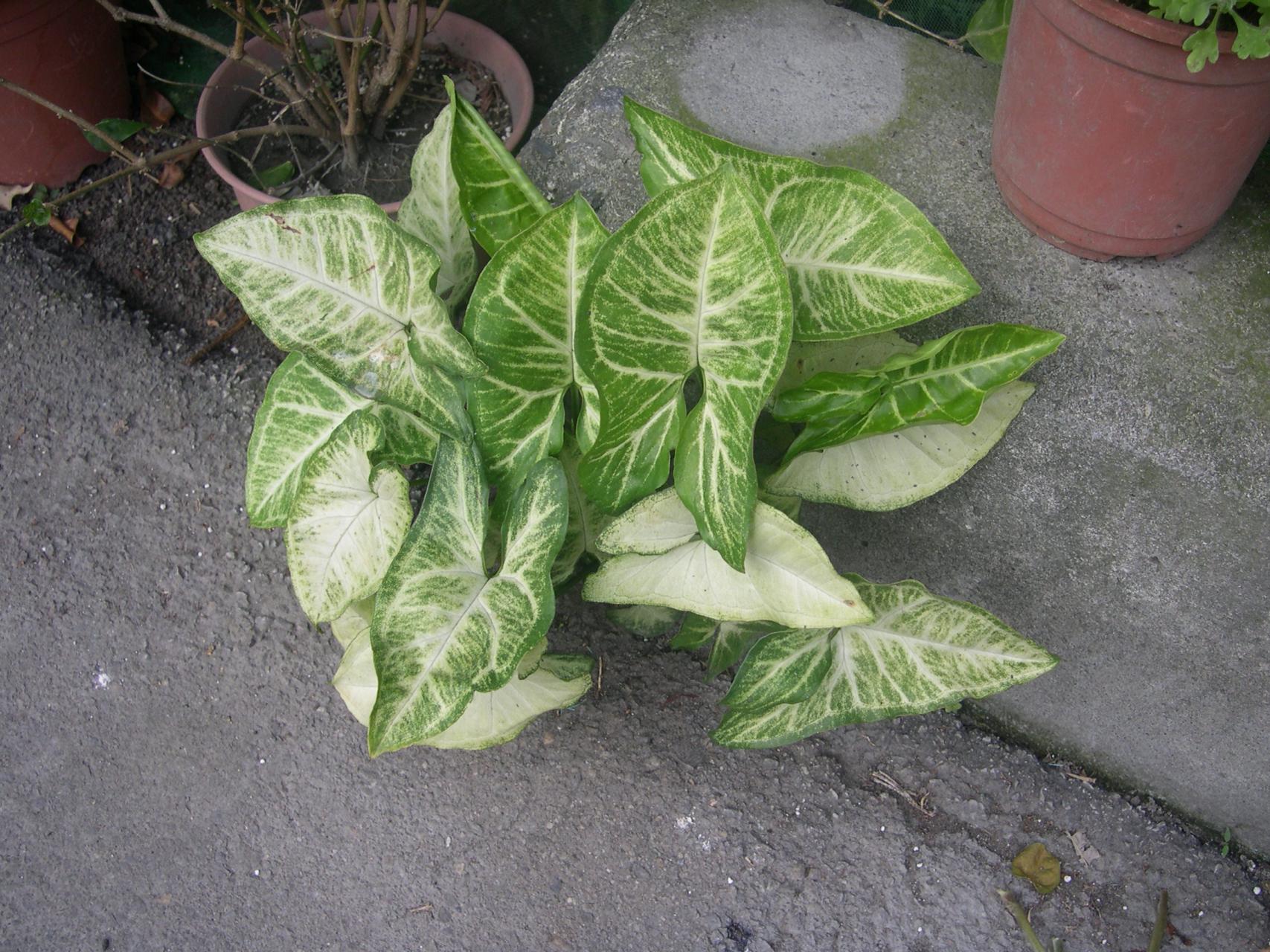
Botanical Name Syngonium podophyllum
Common Name Arrowhead vine
Plant Type Vine
Mature Size 3–6 ft. tall, 1–2 ft. wide
Sun Exposure Partial shade
Soil Type Moist but well-drained
Soil pH Neutral to acidic
Bloom Time Summer (rarely flowers)
Flower Color White
Hardiness Zones 10–12 (USDA)
Native Area South America, Mexico
Toxicity Toxic to dogs and cats
Arrowhead Vine Care
Arrowhead vine is a relatively easy houseplant to care for—it will thrive under the same conditions as its very popular relative, the philodendron. Arrowhead vines are climbers in the wild and will eventually grow from shade into full sun in the canopy of trees, with leaves maturing and gaining size as the plants gain altitude. As a houseplant, they're often used as trailing plants once mature and can be trained up a pole or moss stick for added visual interest. Alternately, you can pinch new growth to maintain the young plant's upright stems.
Tropical in nature, arrowhead vines are perfect for a sunroom or greenhouse conservatory where ample heat, light, and humidity will encourage their growth. Provide your arrowhead vine with the right growing conditions, and you will have a lush and healthy plant.
Light
Arrowhead vine likes bright light but no direct sun. Diffused light is best, as harsh rays can burn or bleach the delicate leaves and vines. Variegated colorways can handle a bit more direct sun, while deeper green varieties are better adapted to partial shade.
Soil
Plant your arrowhead vine in a traditional soil-based potting mix. Arrowhead vines are prone to root rot, so you'll want to make sure whichever potting soil you choose is well-draining. Additionally, consider planting your vine in a terracotta or clay vessel to wick away extra moisture from the soil.
Water
Water your arrowhead vine regularly during the spring and summer months, and reduce your watering cadence come winter. During the spring and summer, you want to allow your vine to dry out partially between waterings but never completely. Likewise, the plant should not be kept too wet, either.
Temperature and Humidity
True to its tropical nature, arrowhead vine prefers warm and humid conditions. If possible, maintain temperatures above 60 degrees Fahrenheit. While the plant can tolerate average humidity, it will thrive best with added moisture in the air. Consider keeping your plant somewhere in your home with naturally higher humidity (like a kitchen or bathroom), or utilize a method of increasing humidity, like a portable machine or placing a bed of wet river rocks beneath the pot.
Fertilizer
Feed your arrowhead vine once a month with liquid fertilizer throughout the spring, summer, and fall months. You can halt feeding throughout winter when the plant will naturally slow its growth.
Propagating Arrowhead Vine
Arrowhead vine plants root readily from stem cuttings and can easily be propagated in the spring or summer months. If your plant has aerial roots along the stem, take a section of the stem with attached roots to increase your odds of success.
To propagate arrowhead vine, place your cutting into a glass of water—within a few weeks, you'll notice new roots have begun to form. Wait at least a month until the roots have strengthened, topping off the water periodically. At that point, you can plant the cutting into the soil as you normally would.

Repotting Arrowhead Vine
These plants are aggressive, rapid-growing vines, so the frequency of repotting depends somewhat on how big you want the vine to get. Repot yearly for a larger vine. Otherwise, refresh potting media every spring and repot every other year to ensure the plant does not become root-bound.
Common Pests and Diseases
Arrowhead vine is relatively resistant to pests on its own. However, dwelling in the home amongst other plants can expose it to pests like spider mites, mealybugs, aphids, and scale. If you notice any of these afflictions, treat your plant immediately with neem oil or another natural solution.
The arrowhead vine's leaf structure changes as it matures, going from a simple arrow shape to a deeply lobed or divided mature leaf. Its leaves can vary in hue depending on their age, ranging from dark green and white to lime green and bright pink. Arrowhead vine is only viable outdoors in USDA hardiness zones 10 through 12, so in most locations in the United States, it is grown year-round as a houseplant. The vine does best if left relatively alone, making it a great pick for novice gardeners or those who just forget to tend to their in-home garden frequently.

Botanical Name Syngonium podophyllum
Common Name Arrowhead vine
Plant Type Vine
Mature Size 3–6 ft. tall, 1–2 ft. wide
Sun Exposure Partial shade
Soil Type Moist but well-drained
Soil pH Neutral to acidic
Bloom Time Summer (rarely flowers)
Flower Color White
Hardiness Zones 10–12 (USDA)
Native Area South America, Mexico
Toxicity Toxic to dogs and cats
Arrowhead Vine Care
Arrowhead vine is a relatively easy houseplant to care for—it will thrive under the same conditions as its very popular relative, the philodendron. Arrowhead vines are climbers in the wild and will eventually grow from shade into full sun in the canopy of trees, with leaves maturing and gaining size as the plants gain altitude. As a houseplant, they're often used as trailing plants once mature and can be trained up a pole or moss stick for added visual interest. Alternately, you can pinch new growth to maintain the young plant's upright stems.
Tropical in nature, arrowhead vines are perfect for a sunroom or greenhouse conservatory where ample heat, light, and humidity will encourage their growth. Provide your arrowhead vine with the right growing conditions, and you will have a lush and healthy plant.
Light
Arrowhead vine likes bright light but no direct sun. Diffused light is best, as harsh rays can burn or bleach the delicate leaves and vines. Variegated colorways can handle a bit more direct sun, while deeper green varieties are better adapted to partial shade.
Soil
Plant your arrowhead vine in a traditional soil-based potting mix. Arrowhead vines are prone to root rot, so you'll want to make sure whichever potting soil you choose is well-draining. Additionally, consider planting your vine in a terracotta or clay vessel to wick away extra moisture from the soil.
Water
Water your arrowhead vine regularly during the spring and summer months, and reduce your watering cadence come winter. During the spring and summer, you want to allow your vine to dry out partially between waterings but never completely. Likewise, the plant should not be kept too wet, either.
Temperature and Humidity
True to its tropical nature, arrowhead vine prefers warm and humid conditions. If possible, maintain temperatures above 60 degrees Fahrenheit. While the plant can tolerate average humidity, it will thrive best with added moisture in the air. Consider keeping your plant somewhere in your home with naturally higher humidity (like a kitchen or bathroom), or utilize a method of increasing humidity, like a portable machine or placing a bed of wet river rocks beneath the pot.
Fertilizer
Feed your arrowhead vine once a month with liquid fertilizer throughout the spring, summer, and fall months. You can halt feeding throughout winter when the plant will naturally slow its growth.
Propagating Arrowhead Vine
Arrowhead vine plants root readily from stem cuttings and can easily be propagated in the spring or summer months. If your plant has aerial roots along the stem, take a section of the stem with attached roots to increase your odds of success.
To propagate arrowhead vine, place your cutting into a glass of water—within a few weeks, you'll notice new roots have begun to form. Wait at least a month until the roots have strengthened, topping off the water periodically. At that point, you can plant the cutting into the soil as you normally would.

Repotting Arrowhead Vine
These plants are aggressive, rapid-growing vines, so the frequency of repotting depends somewhat on how big you want the vine to get. Repot yearly for a larger vine. Otherwise, refresh potting media every spring and repot every other year to ensure the plant does not become root-bound.
Common Pests and Diseases
Arrowhead vine is relatively resistant to pests on its own. However, dwelling in the home amongst other plants can expose it to pests like spider mites, mealybugs, aphids, and scale. If you notice any of these afflictions, treat your plant immediately with neem oil or another natural solution.
0
0
文章
Miss Chen
2018年08月27日

A hanging basket provides a colorful show of blooms during summer. Use perennial plants for your hanging basket for lasting value, since they start to grow again in spring. Choose different varieties of plants for volume and interest. Use trailing plants to hang over the side of the basket and add foliage plants as a green background to bright colored flowers. Water a hanging basket daily, and dead-head the flowers regularly to ensure a continuous display.
Dianthus

A profusion of summer flowers
Normally known as carnations or pinks, the dianthus comes in over 300 varieties. A good border flower for cutting, several species are compact enough for planting in the center of a basket, providing a profusion of flowers during summer. Available in a range of bright colors, many of the blooms are scented.
Fuchsia

Ballerina-like fuchsia flowers
Available in a variety of species, a trailing fuchsia, such as the white and crimson "Cascade," makes an ideal, colorful plant to grow over the edge of a hanging basket. The different types of fuchsia produce pretty, ballerina-like flowers in shades of pink and white and they are easy to grow all summer.
Geranium

The geranium is a hardy perennial.
Normally used for ground cover in gardens, the ivy-leaved geranium is an excellent trailer that adds depth to a display. With evergreen leaves and delicate pink or lilac flowers, the geranium is a hardy perennial which blooms for most of the summer. Remove flowered stems and old leaves to encourage new growth.
Ivy (Hedera)

Variegated ivy provides a green background.
An evergreen, hardy plant, the ivy comes with a variety of leaf shapes and variegation. It is a perfect perennial for providing a background for more showy colors, as it trails gracefully from hanging baskets. Keep the leaves clipped to maintain its shape. Be careful to wear gloves as ivy sap may irritate the skin.
Petunia

A perennial petunia flowers all season.
The petunia plant is available in a variety of species, from the large-flowered grandiflora to the bushier multiflora. Ranging from pink and red, to violet and white, there is a perennial petunia to suit all color schemes. The "Surfina Series'" of grandiflora petunia has a trailing habit which is ideal for hanging baskets. They are available only as young plants and flower well all season.
Viola

The viola brightens a hanging basket.
The evergreen viola is a fast growing plant that provides masses of pretty flowers during summer in shades of purple, white or lavender. Dead-head to prolong flowering for as long as possible. With rich, velvet colors, the viola x wittrockiana, commonly known as the pansy, brightens up the center of hanging baskets.
Dianthus

A profusion of summer flowers
Normally known as carnations or pinks, the dianthus comes in over 300 varieties. A good border flower for cutting, several species are compact enough for planting in the center of a basket, providing a profusion of flowers during summer. Available in a range of bright colors, many of the blooms are scented.
Fuchsia

Ballerina-like fuchsia flowers
Available in a variety of species, a trailing fuchsia, such as the white and crimson "Cascade," makes an ideal, colorful plant to grow over the edge of a hanging basket. The different types of fuchsia produce pretty, ballerina-like flowers in shades of pink and white and they are easy to grow all summer.
Geranium

The geranium is a hardy perennial.
Normally used for ground cover in gardens, the ivy-leaved geranium is an excellent trailer that adds depth to a display. With evergreen leaves and delicate pink or lilac flowers, the geranium is a hardy perennial which blooms for most of the summer. Remove flowered stems and old leaves to encourage new growth.
Ivy (Hedera)

Variegated ivy provides a green background.
An evergreen, hardy plant, the ivy comes with a variety of leaf shapes and variegation. It is a perfect perennial for providing a background for more showy colors, as it trails gracefully from hanging baskets. Keep the leaves clipped to maintain its shape. Be careful to wear gloves as ivy sap may irritate the skin.
Petunia

A perennial petunia flowers all season.
The petunia plant is available in a variety of species, from the large-flowered grandiflora to the bushier multiflora. Ranging from pink and red, to violet and white, there is a perennial petunia to suit all color schemes. The "Surfina Series'" of grandiflora petunia has a trailing habit which is ideal for hanging baskets. They are available only as young plants and flower well all season.
Viola

The viola brightens a hanging basket.
The evergreen viola is a fast growing plant that provides masses of pretty flowers during summer in shades of purple, white or lavender. Dead-head to prolong flowering for as long as possible. With rich, velvet colors, the viola x wittrockiana, commonly known as the pansy, brightens up the center of hanging baskets.
0
0
文章
Miss Chen
2018年08月12日

Few plants are more versatile than the begonia (Begonia spp.), which comes in many different types. One group is especially well-adapted to growing in a hanging planter or basket, either outdoors or in the house. This type of begonia is called trailing or scadent -- scadent means "climbing" -- because its branches can become quite long, in some varieties up to 8 feet, making them ideal for hanging planters. For example, some types of tuberous begonias (Begonia tuberosa) have this type of growth habit and do especially well as hanging plants. They grow in U.S. Department of Agriculture plant hardiness zones 9 through 11, but can also grow as annuals or as houseplants, needing only basic care and occasional trimming to thrive.
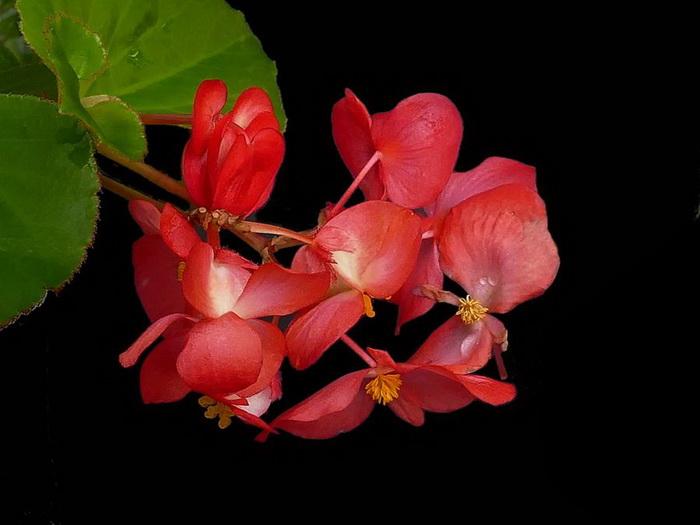
Light Needs
Trailing begonias need strong light to produce a full, multi-stemmed plant with lots of flowers. If you grow the plant outdoors, keep it in a spot that gets some filtered sun in the morning, but avoid full sun at midday or during the hot afternoon hours because this could burn the plant. A spot under a widely-branched tree that provides shifting sun and partial shade is ideal. Indoors, keep a houseplant in a bright spot, such as in an east window where it gets some morning sun.
If the leaves start to fade and become light green, this indicates that the begonia is getting too much light, so move the plant to a shadier spot. If the stems get extra-long, with long distances between leaf origins, this signals that the plant needs more light; in this case, move it to a brighter spot.
Water Needs
Hanging begonia plants do best when soil is evenly moist, but it's important not to over-water because this can cause constantly soggy soil which can damage the plant and, if uncorrected, might kill it. For an indoor-grown plant, water whenever the top inch or two feels dry to the touch, allowing the pot to drain fully. Never keep the pot in a water-filled saucer, because this can cause root rot.
A hanging begonia grown outdoors needs watering whenever its soil surface feels dry. It's a good idea to check this every few days during the summer, because hot weather can cause the soil to dry quickly.
Whether grown indoors or in the garden, a begonia slows its growth during winter when it rests, so cut back watering during the winter months.

Fertilizing Guidelines
Fertilizing a hanging begonia every other time you give it water helps keep the plant growing and flowering during it active season, usually from spring until early fall. Use a balanced formula such as 20-20-20, diluting it half-strength or about 1/4 teaspoon per gallon of water, but check your product label for further directions.
To boost flowering, you can switch to a high-phosphorus formula just before flowering starts, usually in early summer, to help set more flower buds. For example, use a 15-30-15 formula, diluting 1 tablespoon per gallon of water for garden plants and 1/2 teaspoon per gallon for houseplants, but check the product label for additional information. Feed the plant every one or two weeks until the blooming season ends, usually in fall.
Withhold fertilizer during winter to give the plant a rest.
Trimming and Other Care
Trailing begonias in hanging planters can start appearing leggy as the season progresses and the stems get longer. Encourage bushier growth and lateral branching by pinching back the growing tips frequently, using your fingertips or shears that you wipe with rubbing alcohol between cuts to prevent spreading plant diseases. By varying the length of stems through trimming, you can also produce a more shapely plant. For an older plant, remove some old stems now and then to encourage new growth from the plant's base.
Begonias are usually free of significant disease problems, but they can attract several pests, including fluffy white mealybugs. Control these by touching each pest with a cotton swab dipped in rubbing alcohol to destroy it. The plant might also attract spider mites, which form visible, web-like coverings on leaves and flowers. Destroy these pests by spraying the plant thoroughly with insecticidal soap, diluted at a rate of 5 tablespoons per gallon of water; repeat this every two weeks as needed.
Frost Protection
If you grow a hanging begonia outdoors year round and you expect unusual cold or even a bit of frost, bring the plant indoors until weather warms. You can also leave it outdoors, but protect it by hanging a light cloth from the planter's hook so it covers the entire plant, or by placing the planter in a plastic bag that's large enough to enclose the entire plant, tying the bag's open ends to the planter's hook. Be careful when removing any covering, so that you don't injure stems or flower buds.

Light Needs
Trailing begonias need strong light to produce a full, multi-stemmed plant with lots of flowers. If you grow the plant outdoors, keep it in a spot that gets some filtered sun in the morning, but avoid full sun at midday or during the hot afternoon hours because this could burn the plant. A spot under a widely-branched tree that provides shifting sun and partial shade is ideal. Indoors, keep a houseplant in a bright spot, such as in an east window where it gets some morning sun.
If the leaves start to fade and become light green, this indicates that the begonia is getting too much light, so move the plant to a shadier spot. If the stems get extra-long, with long distances between leaf origins, this signals that the plant needs more light; in this case, move it to a brighter spot.
Water Needs
Hanging begonia plants do best when soil is evenly moist, but it's important not to over-water because this can cause constantly soggy soil which can damage the plant and, if uncorrected, might kill it. For an indoor-grown plant, water whenever the top inch or two feels dry to the touch, allowing the pot to drain fully. Never keep the pot in a water-filled saucer, because this can cause root rot.
A hanging begonia grown outdoors needs watering whenever its soil surface feels dry. It's a good idea to check this every few days during the summer, because hot weather can cause the soil to dry quickly.
Whether grown indoors or in the garden, a begonia slows its growth during winter when it rests, so cut back watering during the winter months.

Fertilizing Guidelines
Fertilizing a hanging begonia every other time you give it water helps keep the plant growing and flowering during it active season, usually from spring until early fall. Use a balanced formula such as 20-20-20, diluting it half-strength or about 1/4 teaspoon per gallon of water, but check your product label for further directions.
To boost flowering, you can switch to a high-phosphorus formula just before flowering starts, usually in early summer, to help set more flower buds. For example, use a 15-30-15 formula, diluting 1 tablespoon per gallon of water for garden plants and 1/2 teaspoon per gallon for houseplants, but check the product label for additional information. Feed the plant every one or two weeks until the blooming season ends, usually in fall.
Withhold fertilizer during winter to give the plant a rest.
Trimming and Other Care
Trailing begonias in hanging planters can start appearing leggy as the season progresses and the stems get longer. Encourage bushier growth and lateral branching by pinching back the growing tips frequently, using your fingertips or shears that you wipe with rubbing alcohol between cuts to prevent spreading plant diseases. By varying the length of stems through trimming, you can also produce a more shapely plant. For an older plant, remove some old stems now and then to encourage new growth from the plant's base.
Begonias are usually free of significant disease problems, but they can attract several pests, including fluffy white mealybugs. Control these by touching each pest with a cotton swab dipped in rubbing alcohol to destroy it. The plant might also attract spider mites, which form visible, web-like coverings on leaves and flowers. Destroy these pests by spraying the plant thoroughly with insecticidal soap, diluted at a rate of 5 tablespoons per gallon of water; repeat this every two weeks as needed.
Frost Protection
If you grow a hanging begonia outdoors year round and you expect unusual cold or even a bit of frost, bring the plant indoors until weather warms. You can also leave it outdoors, but protect it by hanging a light cloth from the planter's hook so it covers the entire plant, or by placing the planter in a plastic bag that's large enough to enclose the entire plant, tying the bag's open ends to the planter's hook. Be careful when removing any covering, so that you don't injure stems or flower buds.
0
0
成长记
angelalhk
2018年07月28日
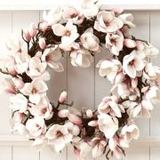
I now added "Portulaca Grandiflora Hook (Japanese Rose) Hanging 20180726" in my "garden"


0
0



